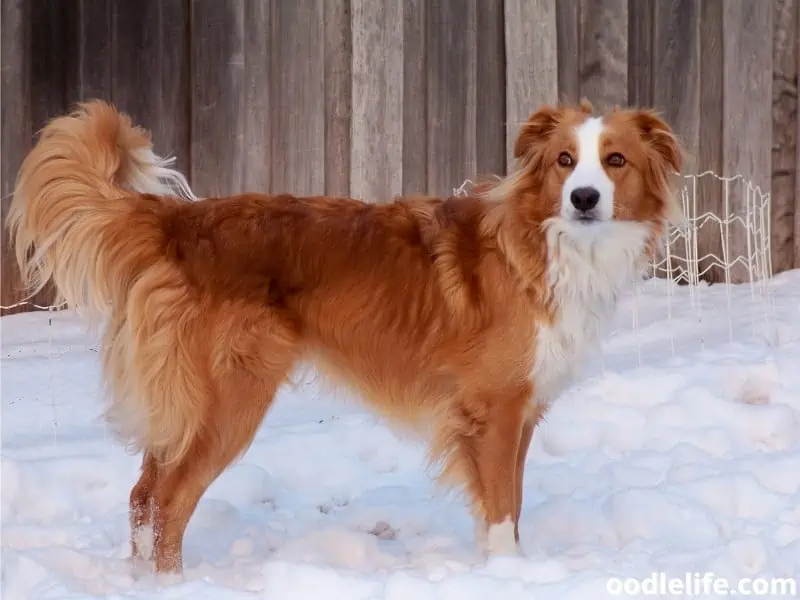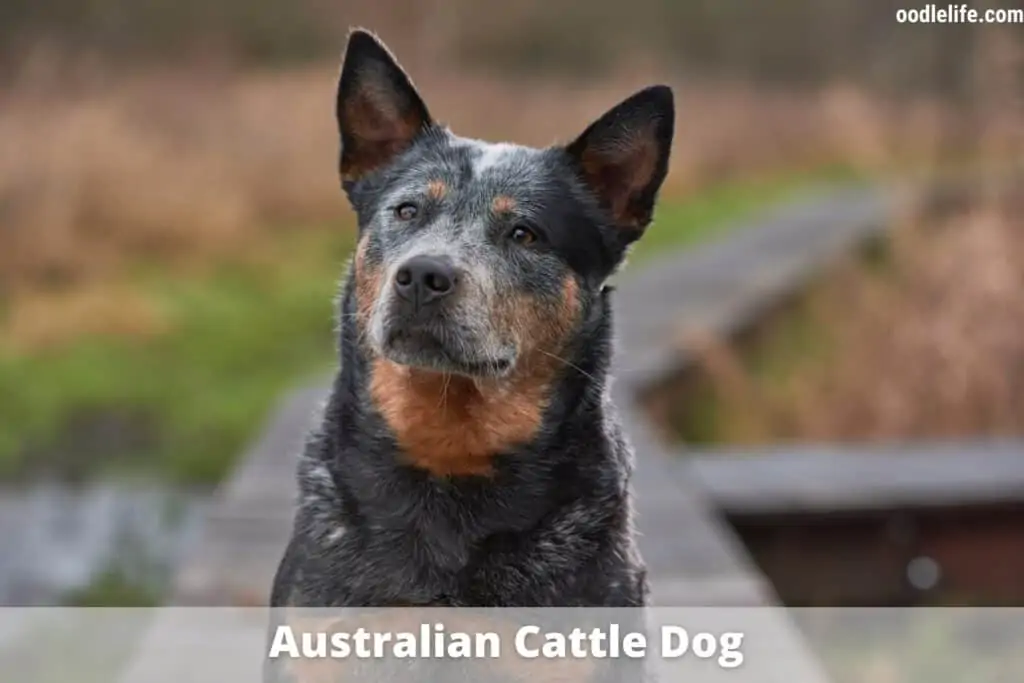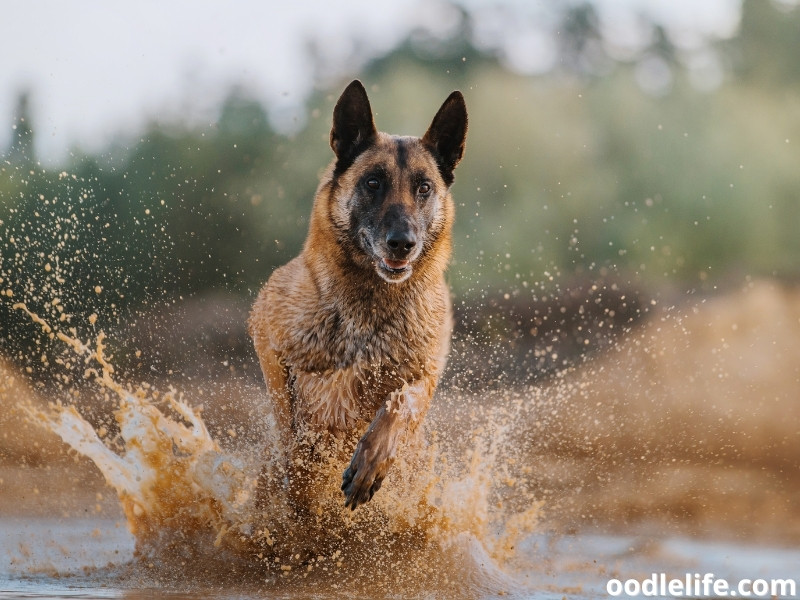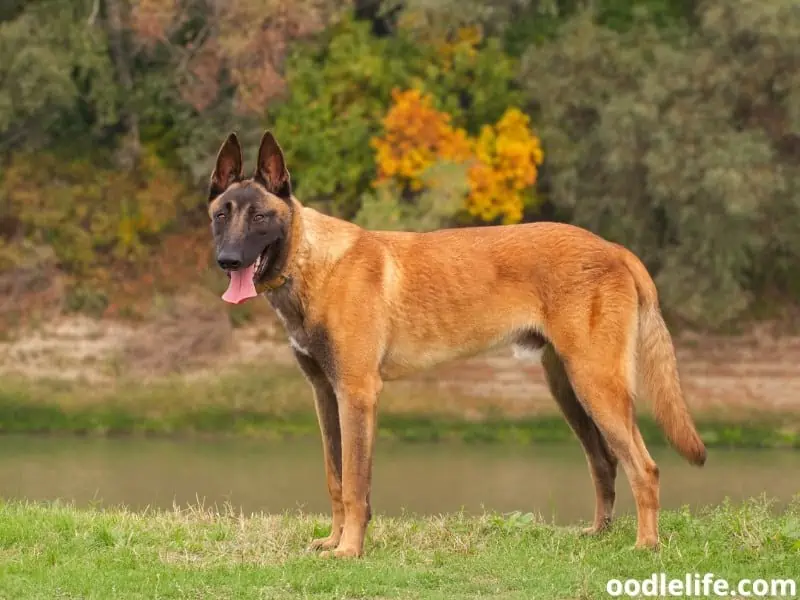12 Types of Shepherd Dog Breeds (With Pictures)
Whether it’s being the protector of the home or working farm dogs, many Shepherd dog breeds take great pride in guarding their territory. These breeds have a long history of working with humans to protect farms and shepherding flocks, and their instincts make the job come very naturally to them.
There are so many types of dogs out there that finding the perfect breed for you might seem overwhelming. This article will cover 12 types of Shepherd dogs that will help you decide which might be the best option for you and your household.

German Shepherd
Famously known for working alongside law enforcement, the German Shepherd is one of the most intelligent dog breeds. As their name suggests, this breed originated in Germany, known initially as German Sheepdogs in the late 19th century. In the 1890s, a German officer and dog breeder, Max von Stephanitz, began to perfect what he believed to be the perfect working dog.
Briefly renamed “Alsatian” during the first world war, the German Shepherd soon regained its name and popularity around the world. Their herding instincts run deep, making them excellent sheep dogs, and their loyalty and need to protect make them fantastic guard dogs.

Border Collie
Taking the spot for the number one most intelligent dog breed in the world, the Border Collie is a medium-sized herding dog originating in the British Isles.
While there are many types of Collies, the Border Collie surpasses them all in terms of smarts and stamina. Having a job to do is what keeps this dog happy and healthy, and they are most commonly used as sheep herding dogs.
Border Collies need considerably more physical exercise than other dogs, which is why they do best as working dogs. They are incredibly energetic and athletic, fully capable of running all day without getting tired.
A non-working Border Collie would need several hours of vigorous exercise every day, so they may not be a good fit for novice dog owners or those who can’t give them proper attention and time.

Australian Kelpie
Sometimes known as simply “Kelpie,” this breed actually originates from Scotland—at least, its ancestors do. They were named after a Kelpie, a mystical water spirit from Celtic folklore. Over the years, Kelpies were imported worldwide to be used as scent dogs, show dogs, working dogs, and more.
A close relative of the Collie, Kelpies were imported to Australia in the early 19th century. For a short time were believed to have been related to Dingos, but this was later proven incorrect. Australian Kelpies have a knack for herding sheep, cattle, and more, with little to no direction.
They are lightweight and can jump up and over larger farmstock, walking across the herds to avoid getting trampled.

English Shepherd
A mix of various Collies and Shepherd breeds, the English Shepherd originated in the US thanks to British settlers in the late 1890s. They were bred for their versatility, intelligence, and loyalty and became known as the “farmer’s helper.”
The English Shepherd has been commonly used as a herding dog but also makes an excellent watchdog, ratter, or family companion.
This breed is fantastic with children and is highly devoted to their humans once they’ve formed a bond. English Shepherds love the outdoors but have a love for home and tend not to wander too far, making them a great choice if you have a lot of land.

Soft Coated Wheaten Terrier
Originating in Ireland in the 1800s, the Soft Coated Wheaten Terrier was notoriously known as a farm dog. Successfully able to herd cattle, exterminate pests, and guard the property, this fluffy, lightweight dog is as versatile as it is loyal.
Their long hair can require some maintenance, but they’re hypoallergenic, making them an excellent option for people with allergies.
The Soft Coated Wheaten Terrier is full of energy and does well in an active household or when given a job. They are friendly, loving dogs, protective of children and their homes—they have even been known to herd wandering children back to a safe space.
These types of Shepherd dogs are vigilant and will be sure to alert you at any possible sign of a threat.

Australian Shepherds
While the exact history of Australian Shepherds is still being debated, they are most commonly believed to have been developed in California in the 1800s.
Their heritage includes a variety of Collies, Shepherds, and other herding breeds, which resulted in one of the most popular herding dogs in America.
Commonly used as working dogs on ranches in the South, Australian Shepherds became known as a “cowboy’s companion” in some areas. These high-energy dogs enjoy herding about anything, whether livestock or people.
If not given frequent, bountiful exercise, these medium-sized pups can be prone to obesity and other health issues.

Shetland Sheepdog
More commonly known as the “Sheltie,” the Shetland Sheepdog is the Scottish cousin of the Collie breed. They are a bit smaller, though quicker on their feet than their cousins, and are just as brilliant. Training is a breeze for these vocal watchdogs, and herding comes naturally to them.
The Shetland Sheepdog’s long, double coat needs frequent brushing and sheds quite a bit, but minimal grooming is required.
They prefer an active lifestyle but can adapt quite well to town or city life, socializing well with children and other pets.

Australian Cattle Dog
Also known as a Blue Heeler, the Australian Cattle Dog is actually related to the Dingo. Because of this, they can be slightly more temperamental than other herding dogs and are always happier when on the job.
Despite this, ACDs are highly intelligent and trainable. Socialization is critical for these dogs at a young age, and they can be good family dogs if introduced to children early on.
Bred initially in Australia, ACDs were trained to bite and nip at cattle to get them moving, and today, they are known for nipping at human’s heels.
This habit can become dangerous if left unchecked, so proper training is key to ensuring your dog minds his manners. However, their urge to protect their owners makes them excellent guard dogs, and they will often defend them without being prompted.

Central Asian Shepherd
The Central Asian Shepherd was traditionally used to guard livestock, such as sheep and goats, from predators in Asia.
It was also common for these dogs to participate in dog fighting in certain areas, though these types of “fights” were not nearly as cruel and harmful as today’s illegal Pitbull fights. However, Central Asian Shepherds are still known to be an alpha-dog and sometimes try to prove their strength to other dogs.
These Shepherds are solid and proud, somewhat independent, but still easy to train. They are fearless when facing threats and highly protective of what is theirs. Best suited for guarding rather than herding, these types of Shepherd dogs are relatively low-energy and could use a daily walk or two.
Otherwise, they are comfortable lounging around the yard.

Belgian Shepherd
A distant cousin of the German Shepherd, Belgian Shepherds originated in Belgium. It’s unclear how long they were around before nearly going extinct in the late 1800s. During that time, a club was formed for the sole purpose of saving the breed.
During World War I, Belgian Shepherds were used by the Belgian Army to locate injured soldiers.
These dogs are not only brilliant but empathetic and sensitive to human needs. They are easy to train for a strong-willed owner but tend to try and dominate those with a weaker will. They tend to socialize well with humans, including children, but their relationship with other dogs can be temperamental.

Belgian Malinois
Commonly mistaken for the German or Belgian Shepherds, the Belgian Malinois sports a few notable differences.
The Malinois has a shorter coat than any Shepherd, suitable for withstanding the elements and avoiding getting caught in brush or thickets. They have a strong prey drive, making them great for exterminating pests but not so great with other small pets or children in the home.
The Belgian Malinois has worked with the military, Navy Seals, and law enforcement for over a century. Their ability to catch a scent is second to none, and they are one of the fastest-running dog breeds. These high-energy dogs need constant attention and mental and physical engagement to stay happy and healthy.

Puli
A Hungarian herding dog known for its dreadlock-style coat, the Puli is a dog like no other. They are considered high-maintenance dogs due to their need for frequent grooming and intensive exercise. It is likely because of this that the breed has dropped in popularity over the last few decades.
Despite this, the Puli continues to be excellent farm dogs, even known to direct herds of stallions. They are loyal and protective of their owners and can be excellent watchdogs.

Conclusion
As we’ve seen, the various types of Shepherd dogs above come in many shapes, sizes, colors, and backgrounds. Many dogs require extra attention and engagement, so be sure you can provide that before acting in haste.
Make sure to think it through, research thoroughly, and be prepared before adding any pet to your household. Doing so will ensure you find the best match for you and your future pup!